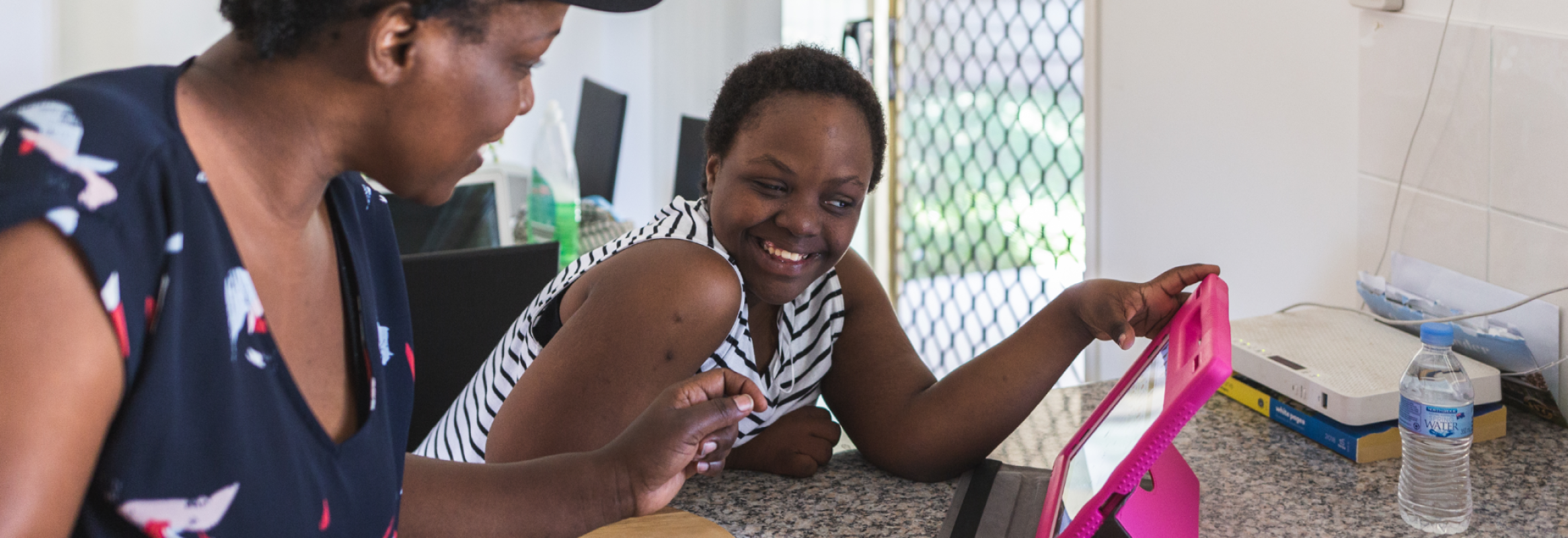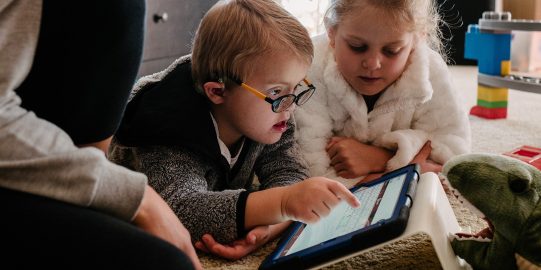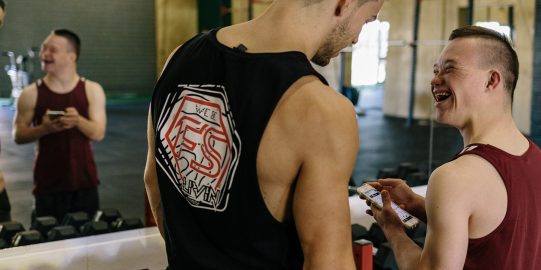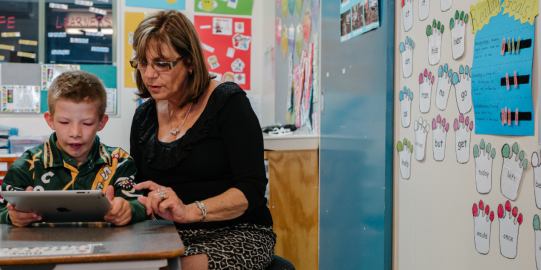AAC help: Common phrases and buzzwords
AAC stands for Augmentative and Alternative Communication. AAC are the tools or technology that help people communicate if they can’t rely on speaking. In this blogpost we've summarized some of the most common AAC buzzwords, with a short explanation and links to more information.
AAC
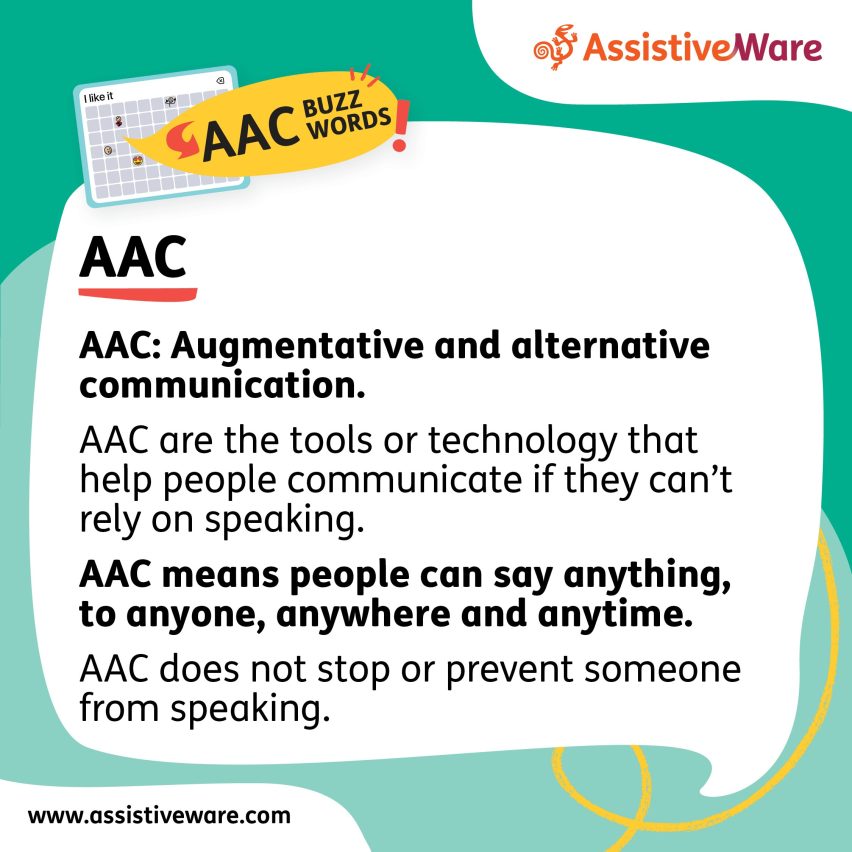
AAC stands for Augmentative and alternative communication. AAC are the tools or technology that help people communicate if they can’t rely on speaking. When someone uses AAC, it means that they can say anything, to anyone, anywhere and anytime.
People who use AAC
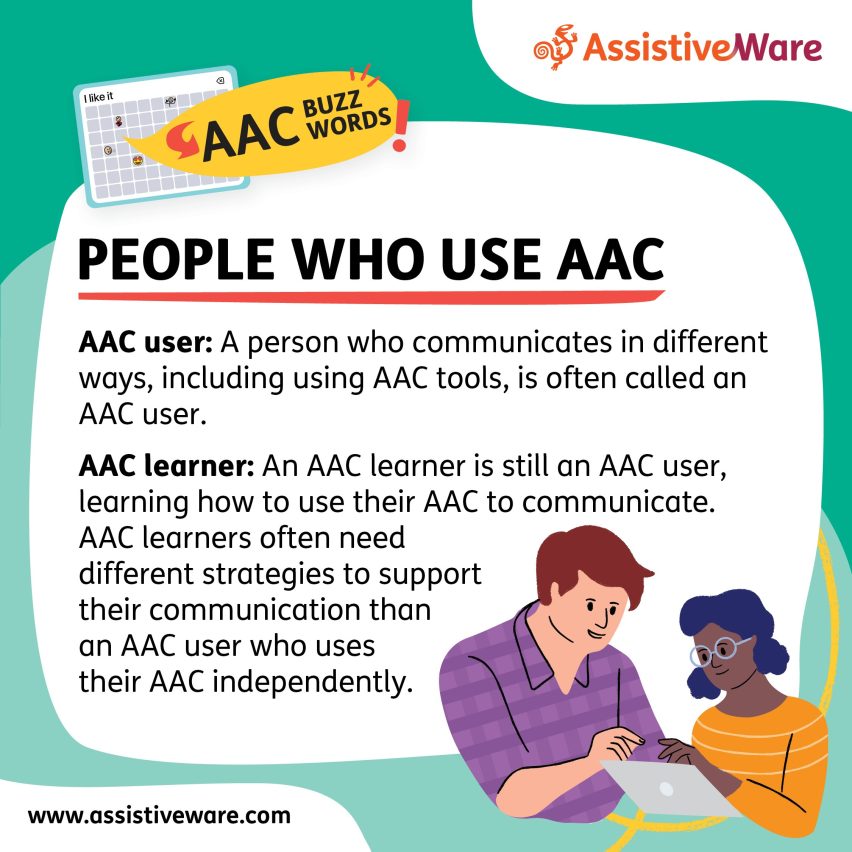
AAC user
A person who communicates in different ways, including using AAC tools, is often called an AAC user.
AAC learner
An AAC learner is still an AAC user, learning how to use their AAC to communicate. AAC learners often need different strategies to support their communication than an AAC user who uses their AAC independently.
Read more about different types of AAC
Presume competence
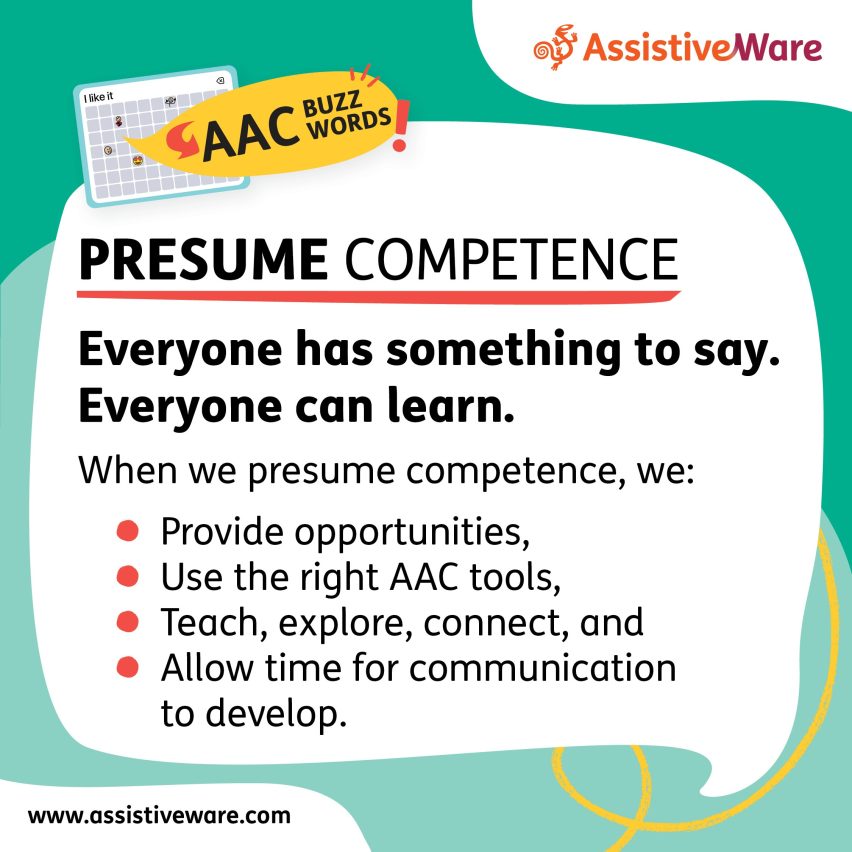
Everyone has something to say. Everyone can learn.
When we presume competence, we:
- provide opportunities
- use the right AAC tools
- allow time for communication to develop
Read more about presuming competence
Always available
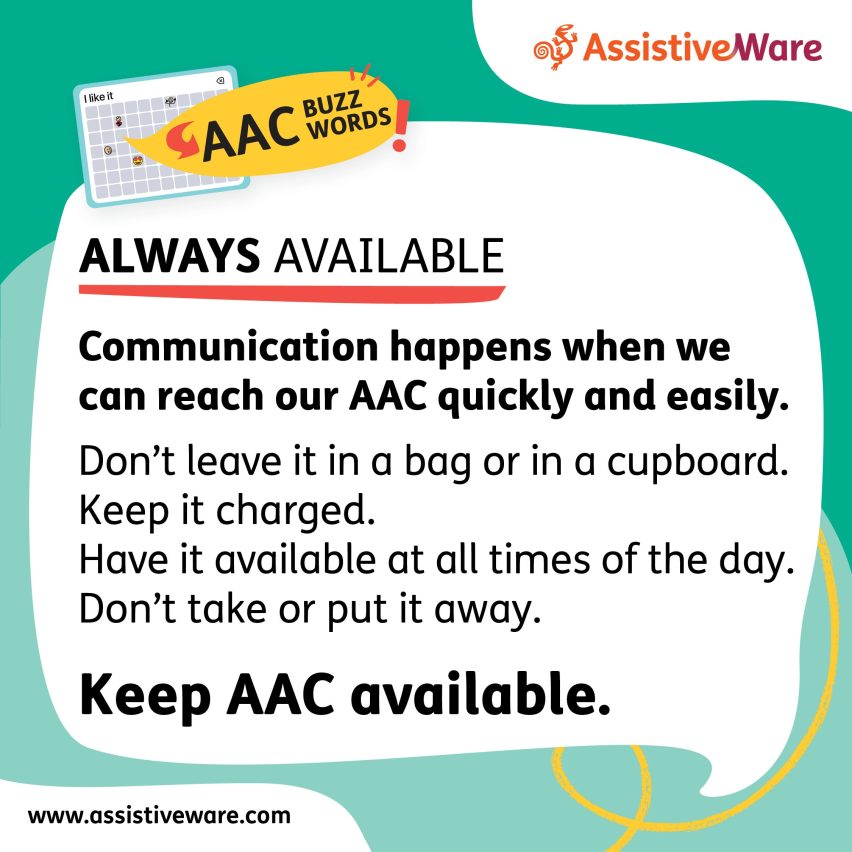
We should set up every environment to make sure AAC is always available. Communication happens when we can reach our AAC quickly and easily.
Don’t leave it in a bag or in a cupboard. Keep it charged. Have it available at all times of the day. Don’t take or put it away.
Read more practical ways to make sure AAC is always available
High and low light tech AAC
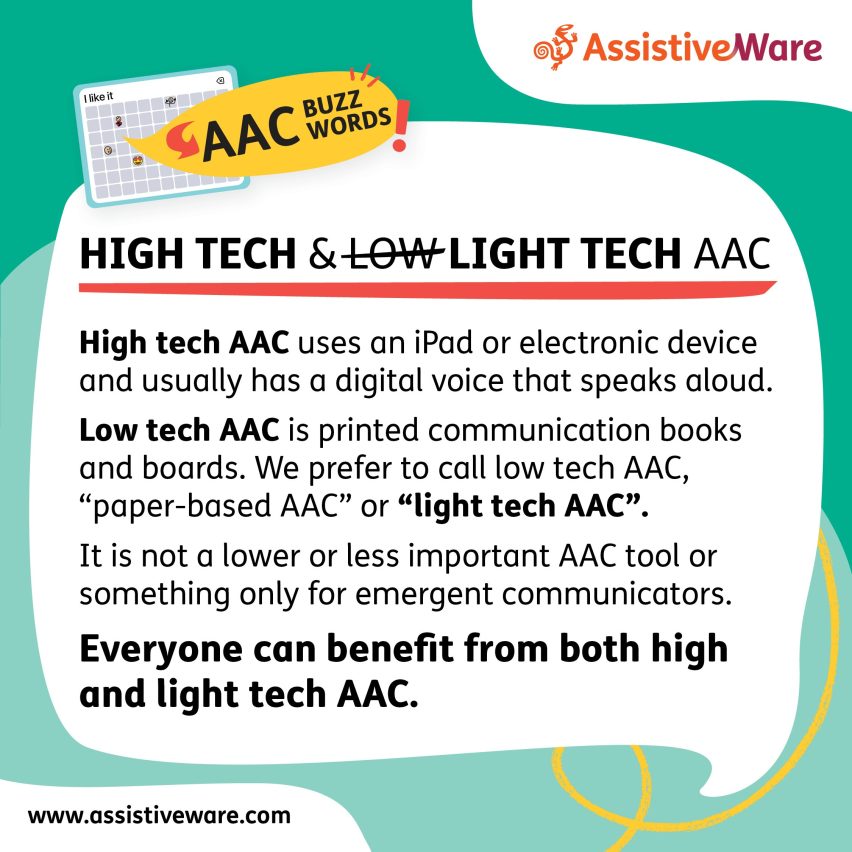
High tech AAC uses an iPad or electronic device and usually has a digital voice that speaks aloud. Low tech AAC is printed communication books and boards but we prefer the terms “paper-based AAC” or “light tech AAC”. It is not a less important AAC tool or something only for emergent communicators. Everyone can benefit from both high and light tech AAC.
Read more about high and light tech AAC
Multimodal communication
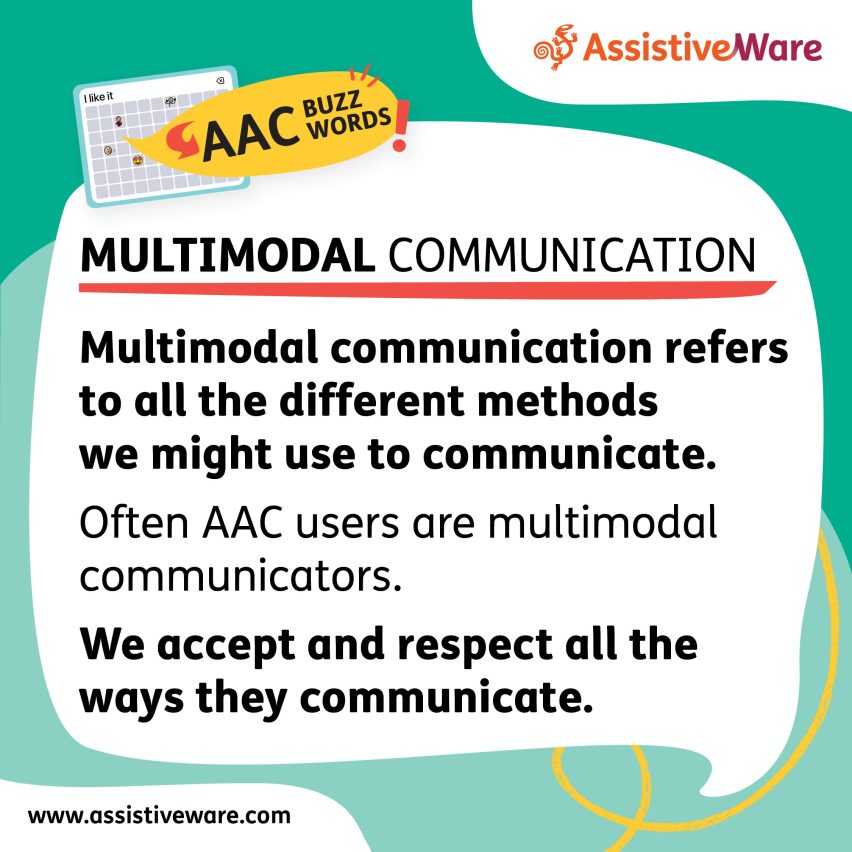
Multimodal communication refers to all the different methods we use to communicate. AAC users are often multimodal communicators. We accept and respect all the ways they communicate.
Some of the different ways we communicate include:
- verbal speech
- body language and facial expression
- gestures and sign language
- pointing and looking
- showing
- a communication device, book or board
- pictures or photos in a catalogue, magazine, device or book
- typing and spelling
- online (social media, email, blog)
- emojis
Read more about Multimodal communication
Core words
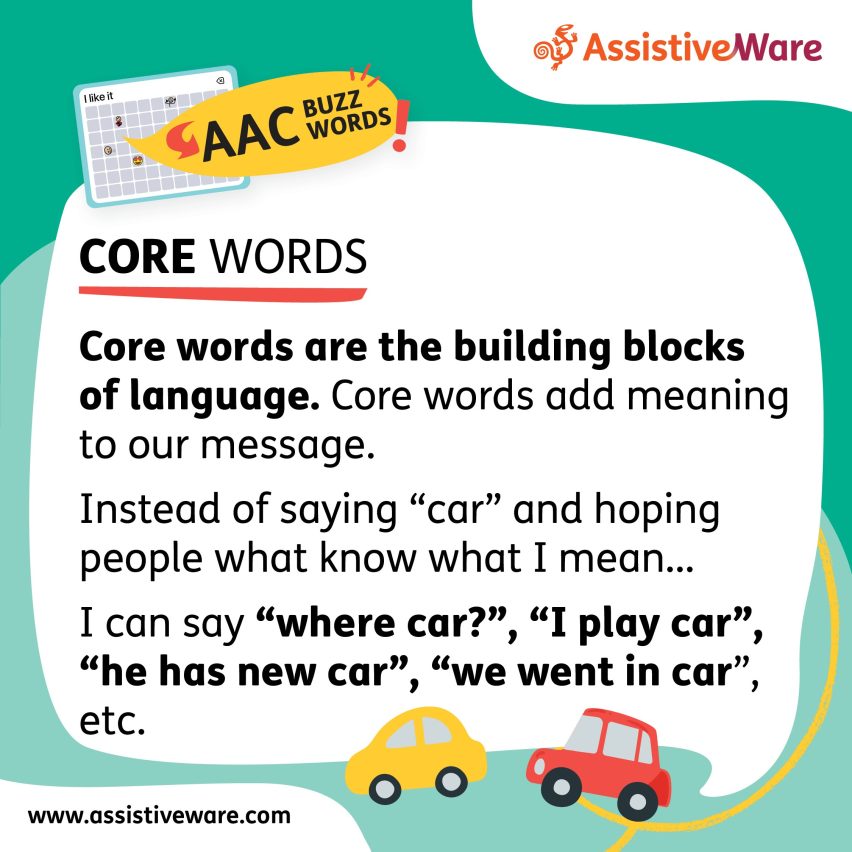
Core words are the building blocks of language. They add meaning to our message.
Instead of saying “car” and hoping people what know what I mean… I can say “where car?”, “I play car”, “he has new car”, “we went in car”, etc.
Teaching core words gives AAC users power and flexibility in their language.
Fringe words
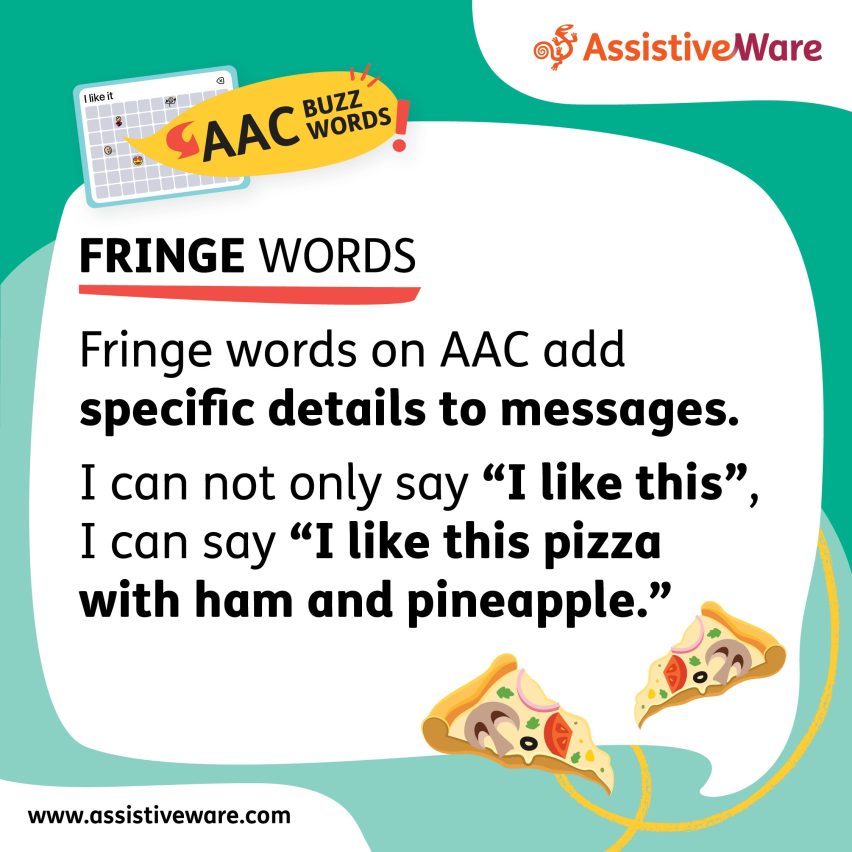
Fringe words on AAC add specific details to messages.
I can not only say “I like this”, I can say “I like this pizza with ham and pineapple.”
We should take time to personalize fringe words so that they exist on the AAC user’s device.
Alphabet
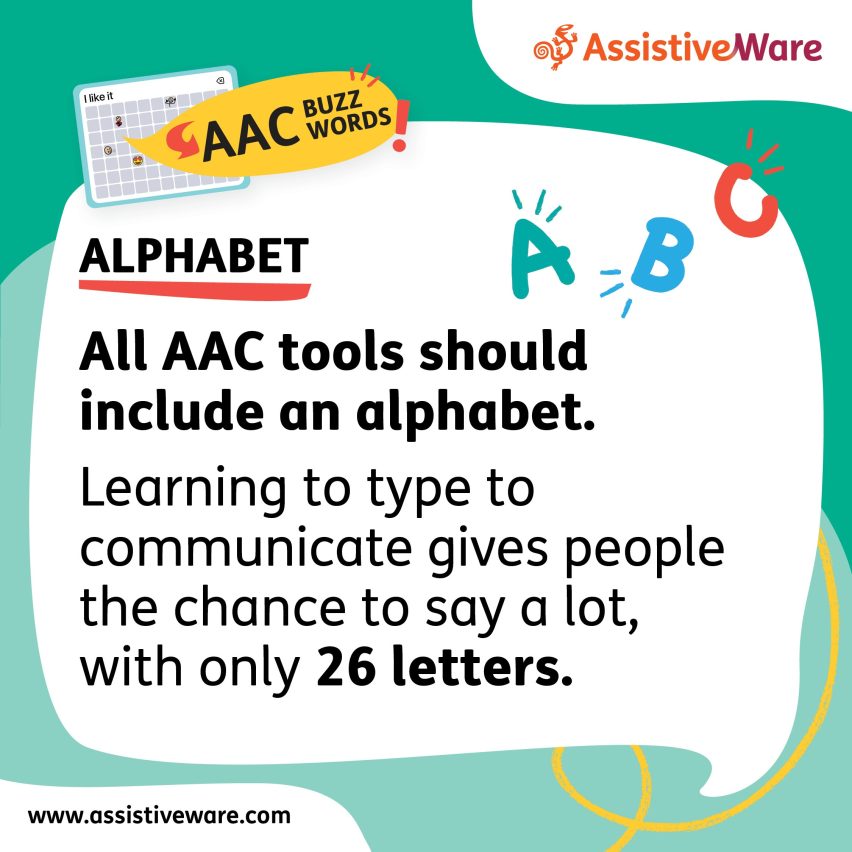
All AAC tools should include an alphabet. Learning to type to communicate gives people the chance to say a lot, with only 26 letters. Even when an AAC user cannot read or write yet, they should start scribbling with a keyboard as soon as possible. We make sure that AAC includes an alphabet.
Read more on the alphabet and on literacy instruction
Communication functions
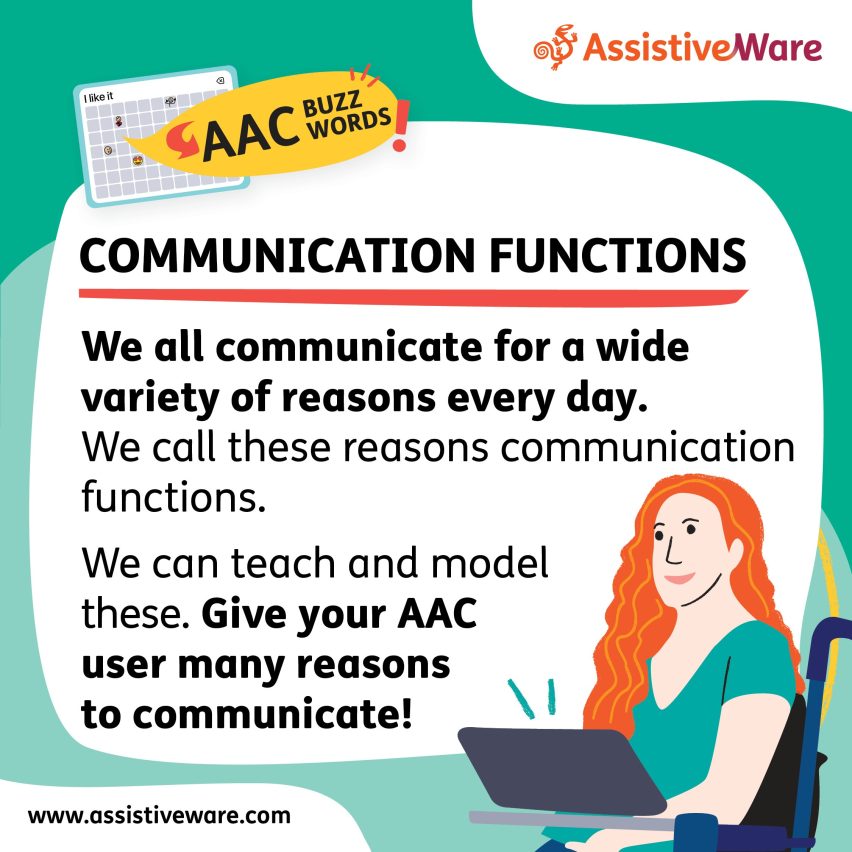
We all communicate for a wide variety of reasons every day. We call these reasons communication functions and we can teach and model them. Give your AAC user many reasons to communicate!
Read more about communication functions and download our FREE communication functions poster
Balanced and robust vocabulary
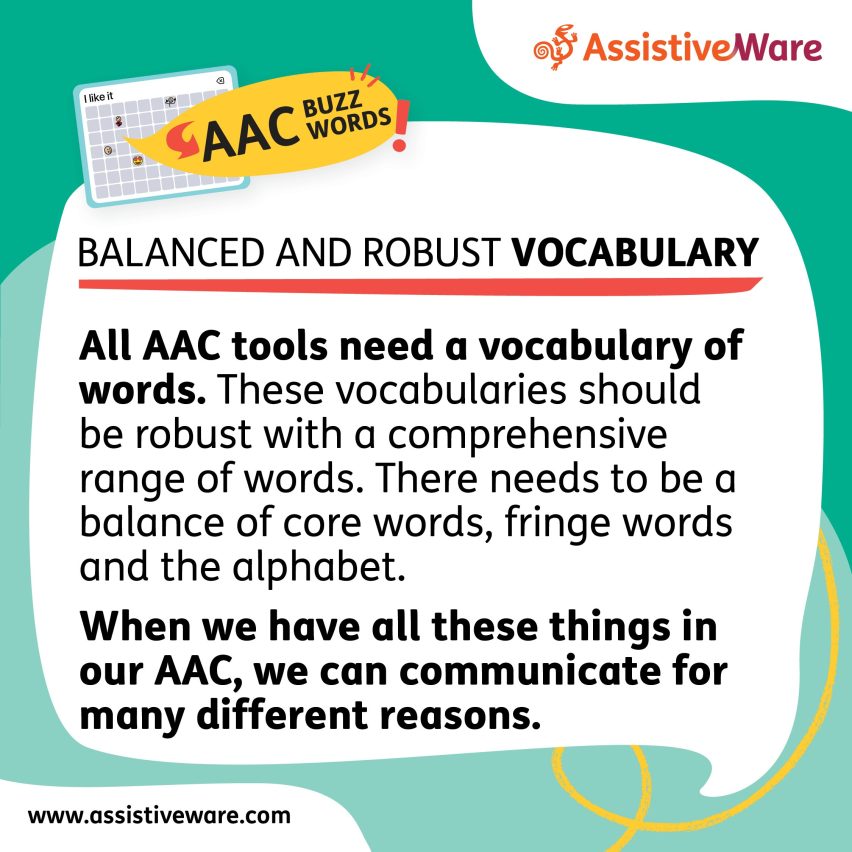
All AAC tools need a vocabulary that should be robust with a comprehensive range of words. There should be a balance of core words, fringe words and the alphabet.
When we have all these things in our AAC, we can communicate for many different reasons.
Read more about what AAC vocabularies need and watch this video on the topic
Core word boards
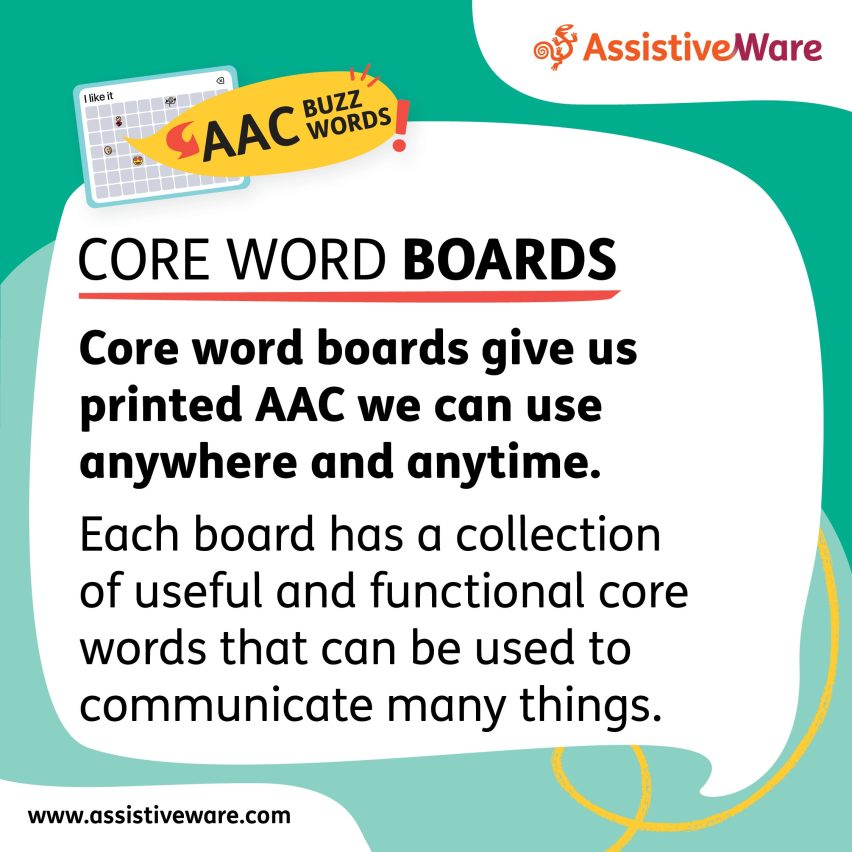
Core word boards give us printed AAC we can use anywhere and anytime. Each board has a collection of useful and functional core words that can be used to communicate many things.
Download your free set of Quick communication boards
Activity specific boards
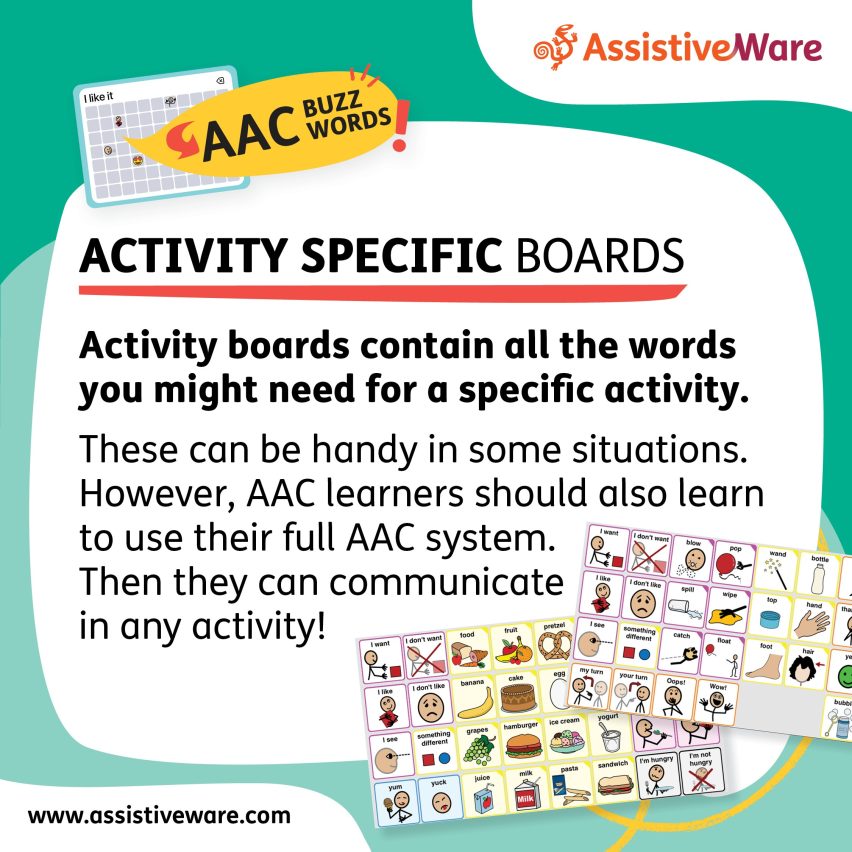
Activity boards contain all the words you might need for a specific activity. These can be handy in situations, such as messy play, the beach, or when introducing a new or unfamiliar activity. However, AAC learners should learn to use their AAC system fully so they can communicate in any activity!
Read more about when to use activity boards and when to use your AAC tool
Communication partners
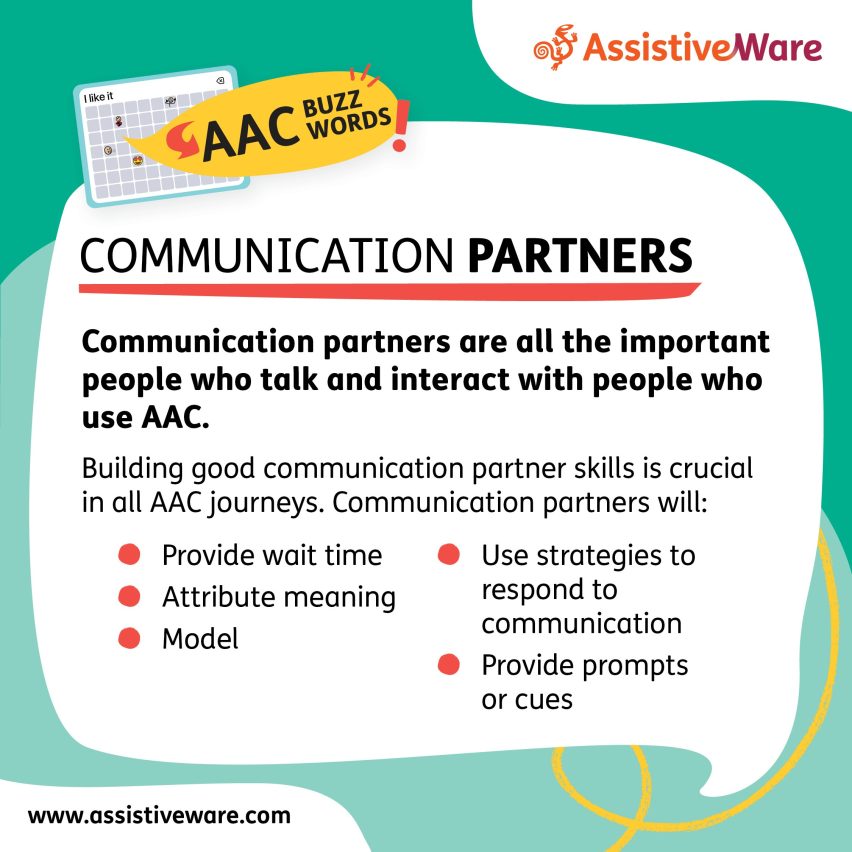
Communication partners are all the important people who talk and interact with people using AAC. Building good communication partner skills is crucial in all AAC journeys. A communication partner will:
- Provide wait time
- Attribute meaning
- Model
- Use strategies to respond to communication
- Provide prompts or cues
Read more about communication partner skills for AAC learners and for all AAC users
Wait time
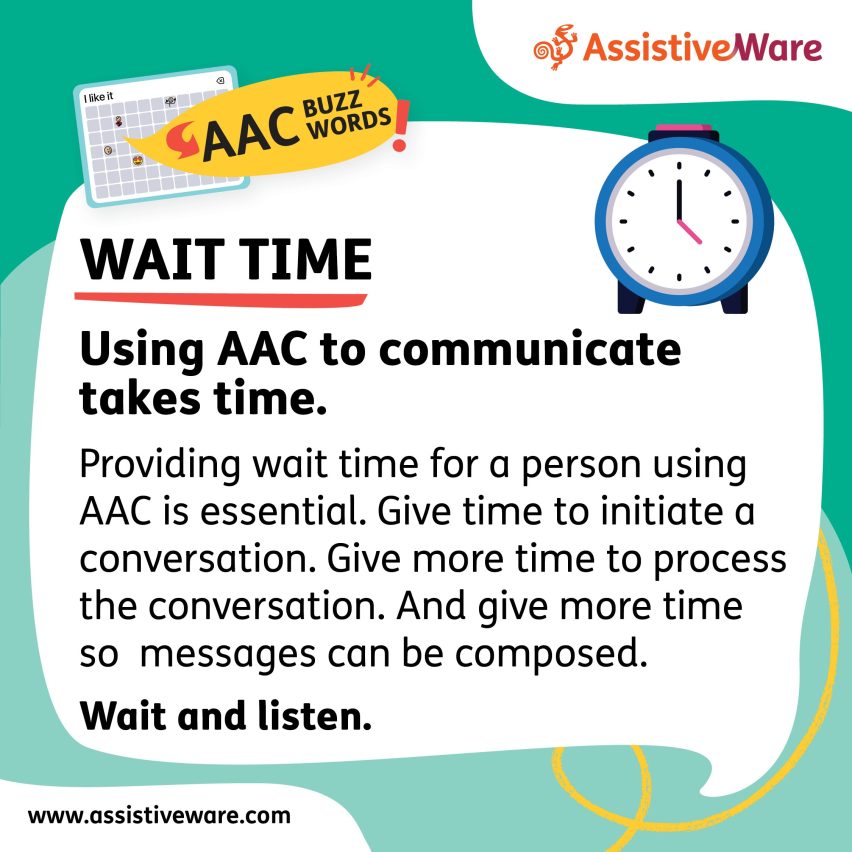
Using AAC to communicate takes time and providing the time is essential to initiate a conversation, process and allow messages to be composed. Wait and listen.
Attributing meaning
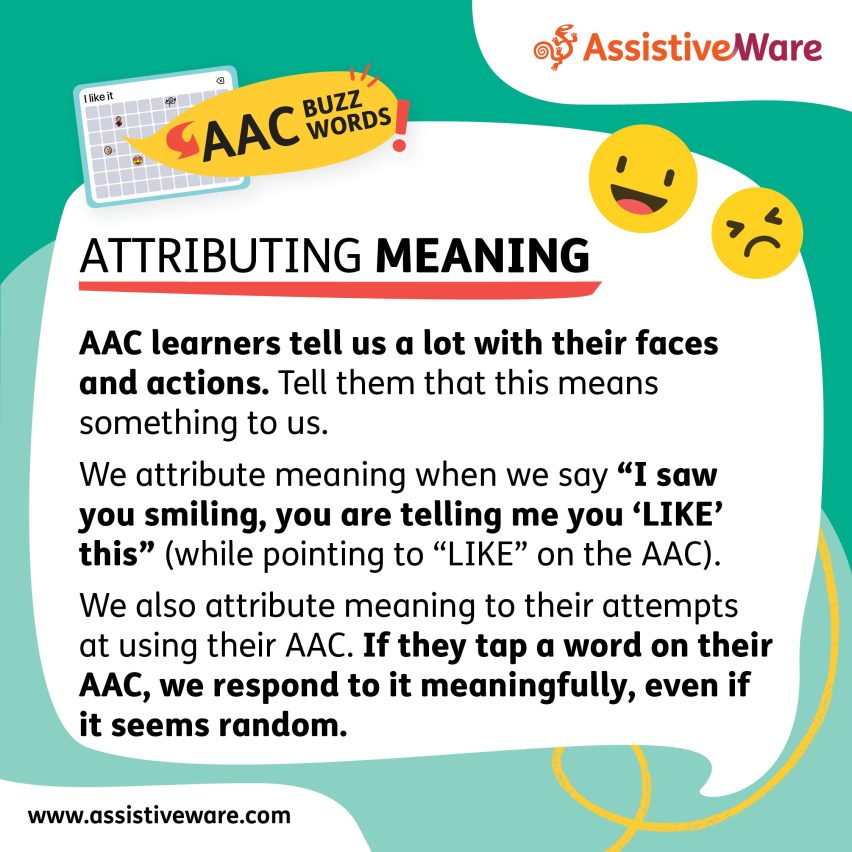
AAC learners tell us a lot with their faces and actions and we should acknowledge that. We attribute meaning when we say “I saw you smiling, you are telling me you ‘LIKE' this” (while pointing to “LIKE” on the AAC).
We also attribute meaning to their attempts at using their AAC. If they tap a word on their AAC, we respond to it meaningfully, even if it seems random.
Read more about how you can attribute meaning and watch the video
Modeling
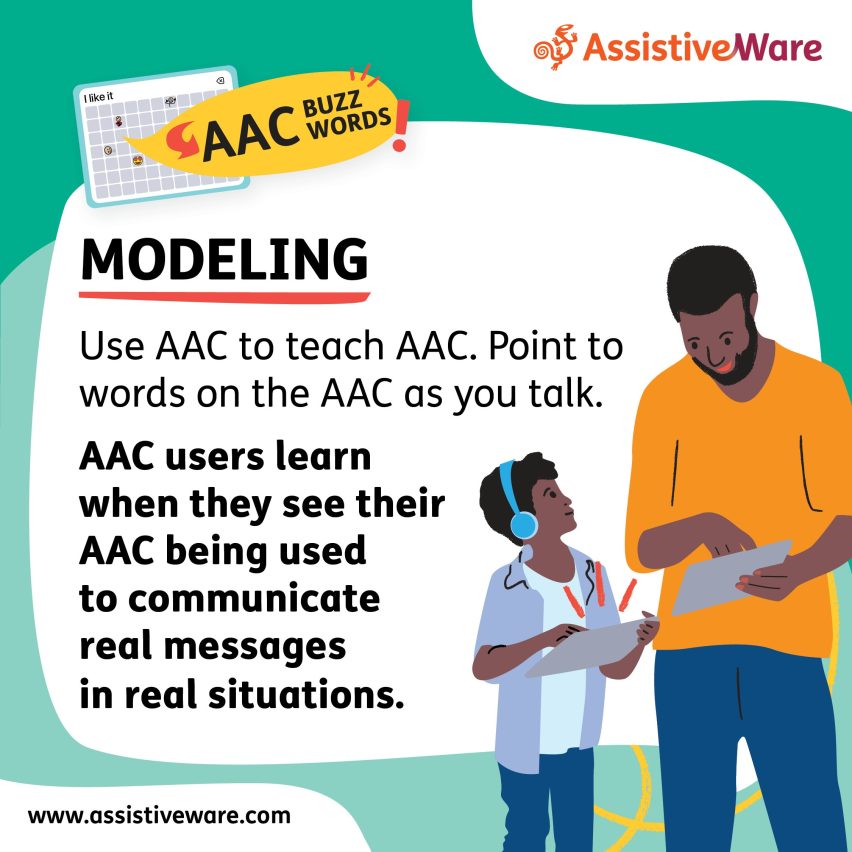
Use AAC to teach AAC. Point to words on the AAC as you talk. AAC users learn when they see their AAC being used to communicate real messages in real situations.
Read more about modeling and watch video explaining modeling
Response strategies
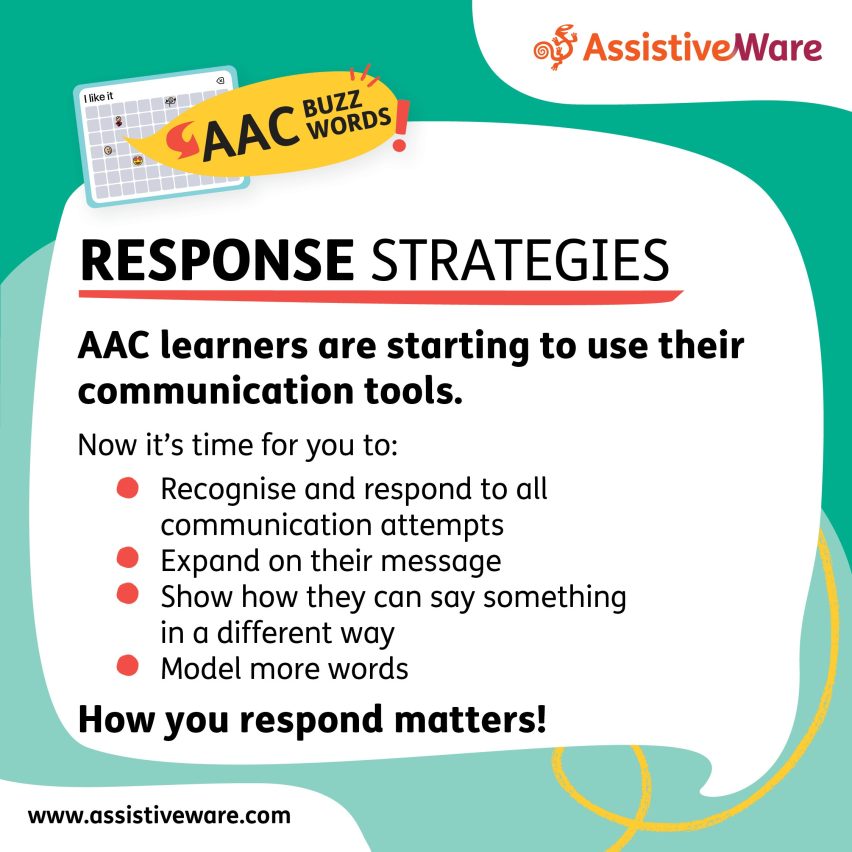
When an AAC learner starts to use their communication tools, you should:
- Recognize and respond to all communication attempts
- Expand on their message
- Show how they can say something in a different way
- Model more words
How you respond matters!
Read more about how you can respond
Prompting
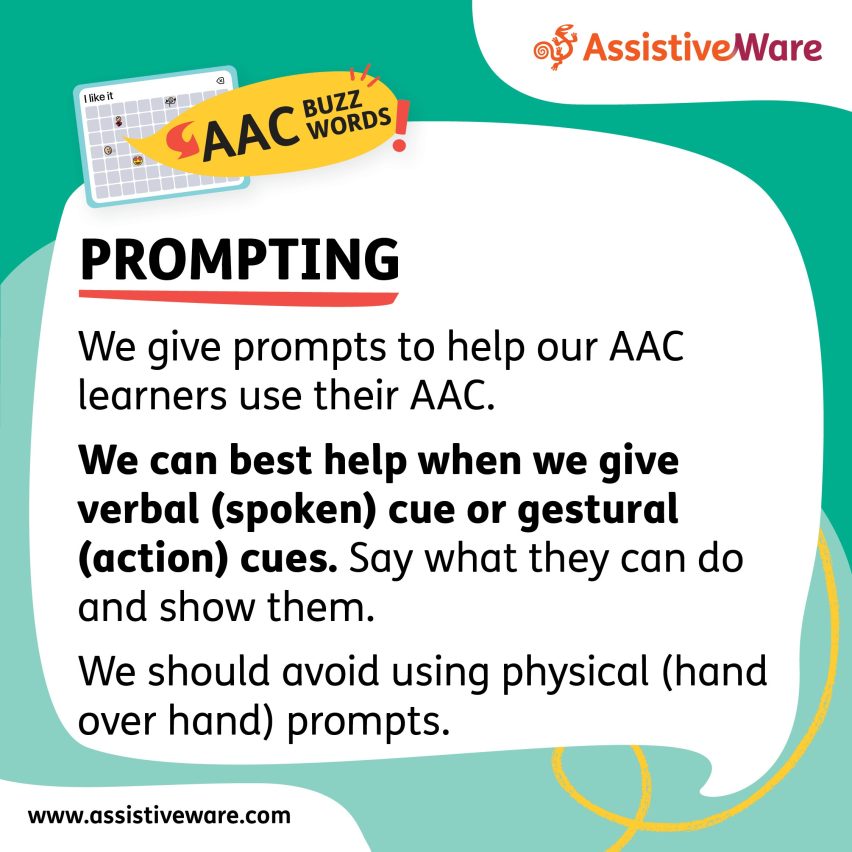
We give prompts to help our AAC learners use their AAC, preferably verbal (spoken) cues or gestural (action) cues. Say what they can do and show them.
We should avoid using physical (hand over hand) prompts.
Motor planning
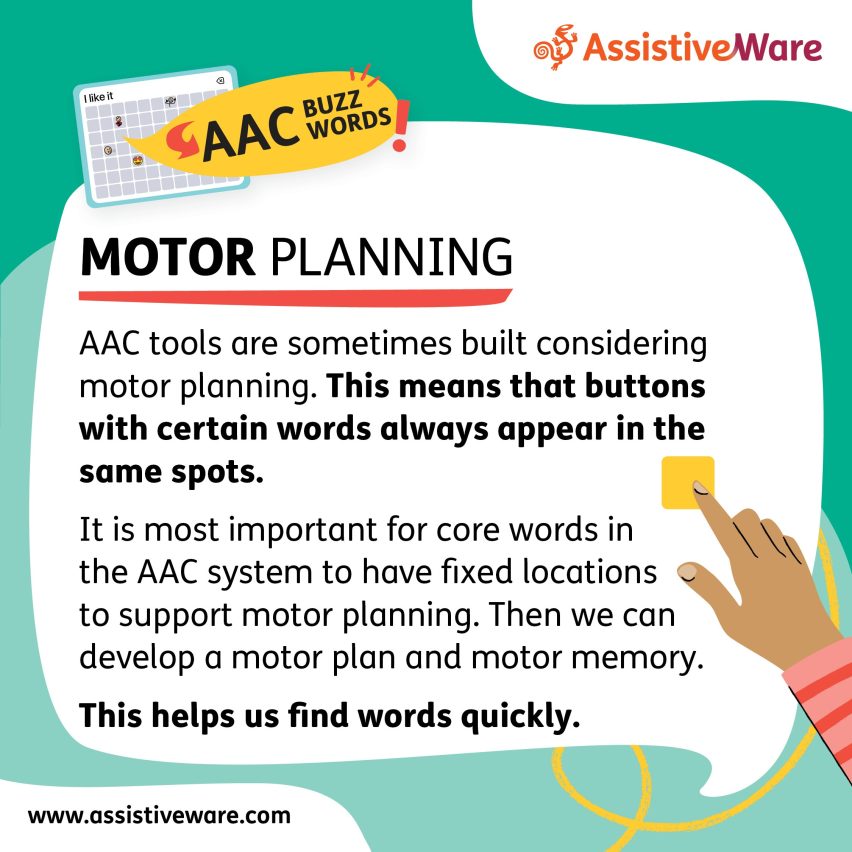
Motor planning means that buttons with certain words appear on the same spots on AAC tools. Having fixed spots is especially important for core words, as this helps develop a motor plan and motor memory. We can then find words quickly.
Read more about Motor planning (external link) and see how it works in Proloquo2Go
Communication Access
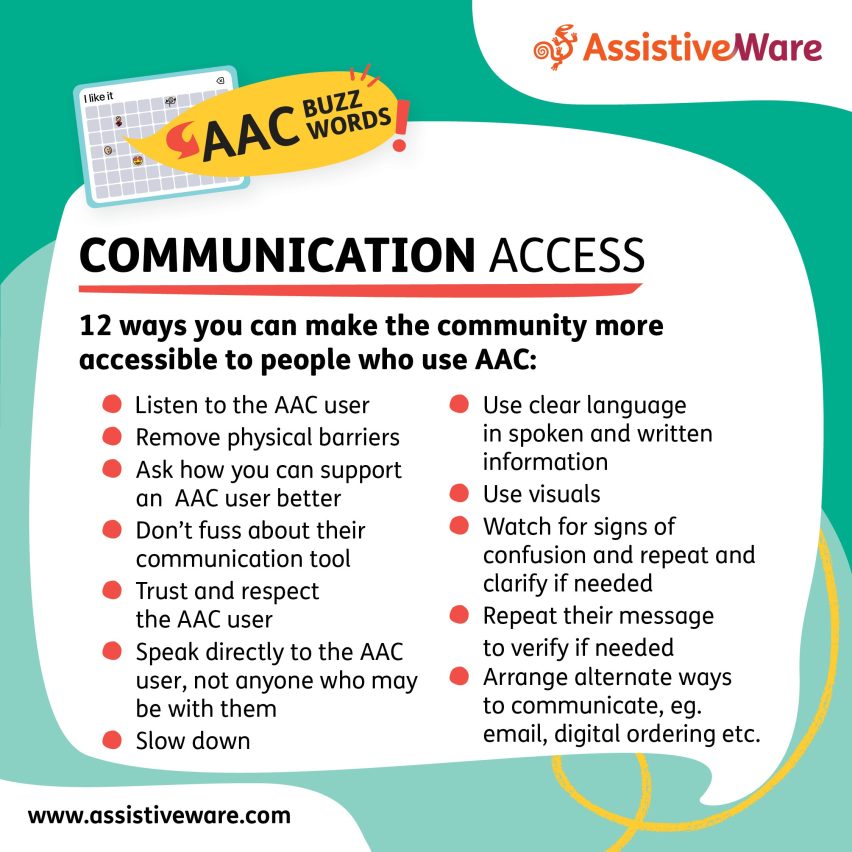
There are 12 easy ways that you can make the community more accessible to people who use AAC:
- Listen to the AAC user
- Remove physical barriers
- Ask how you can support an AAC user better
- Don’t fuss about their communication tool
- Trust and respect the AAC user
- Speak directly to the AAC user, not anyone who may be with them
- Slow down
- Use clear language in spoken and written information
- Use visuals
- Watch for signs of confusion. Repeat and clarify if needed
- Repeat their message to verify if needed
- Arrange alternate ways to communicate, eg. email, digital ordering etc.
Read more about communication access
Part-time AAC
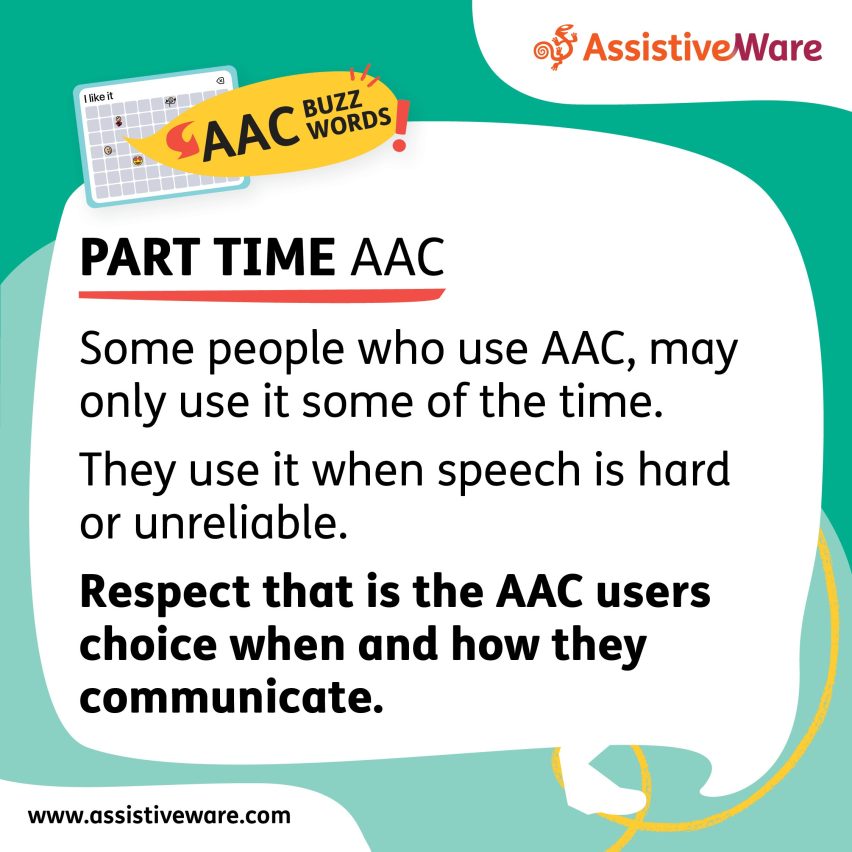
Some people who use AAC, may only use it some of the time. They use it when speech is hard or unreliable. Respect that this is the AAC user’s choice.
Read more about part-time AAC use
AAC mentors
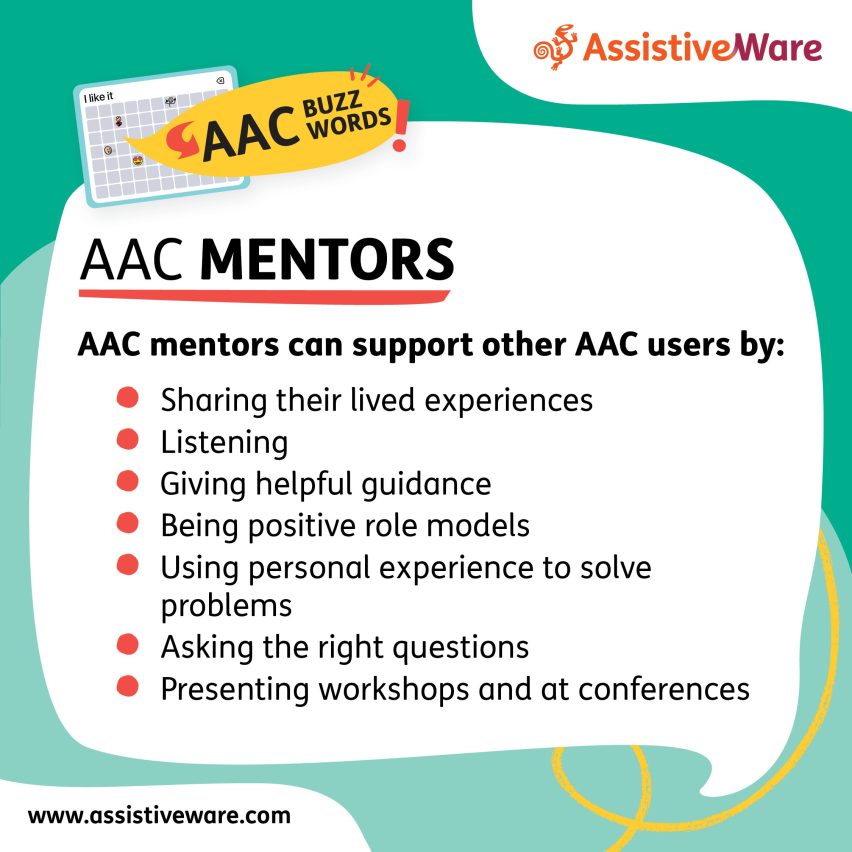
Everyone benefits from mentors! AAC users need more mentors and role models.
AAC mentors can support other AAC users by:
- Sharing their lived experiences
- Listening
- Giving helpful guidance
- Being positive role models
- Using personal experience to solve problems
- Asking the right questions
- Participating at workshops and conferences
Share today
AAC buzzwords are a great starting point for learning more about AAC. Share these words today!
